Five years ago I posted the results from an experiment that measured the effectiveness of different approaches to rooting seedling-cuttings (see “Effect of hormone treatments” for details).
The study had been on my mind ever since as I’ve been curious about whether increased exposure to rooting hormones makes a difference. This spring, I decided to find out.
Instead of taking an academic approach like I did five years ago, I followed a more-or-less consistent protocol and took some notes. I used Dip-N-Grow liquid rooting hormone for all of the cuttings, but I varied the dilution and duration.
I hadn’t planned to share the results until a very clear pattern emerged. Can you spot it?
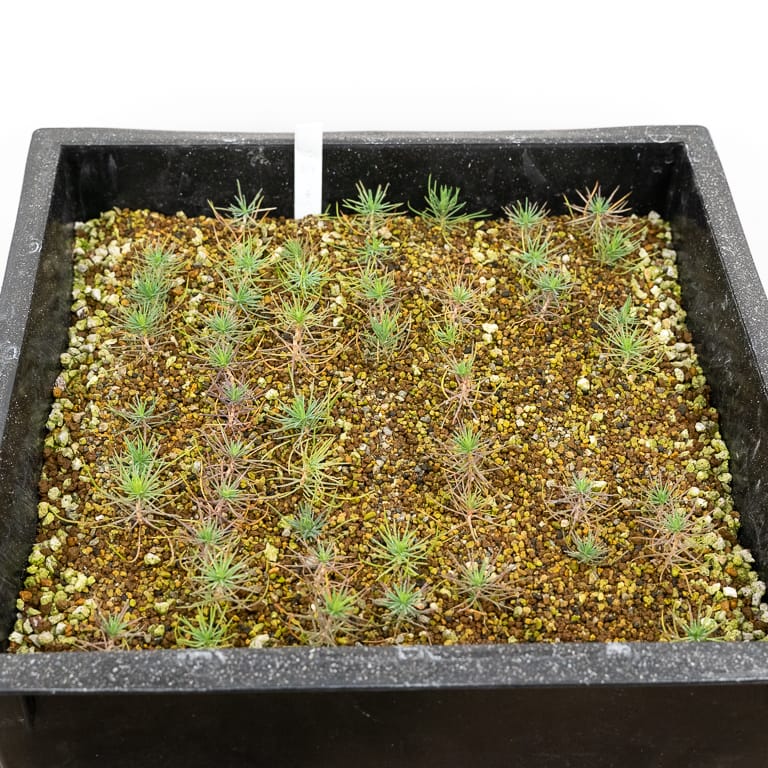
Japanese black pine seedling-cuttings
10x dilution @ 5 min.
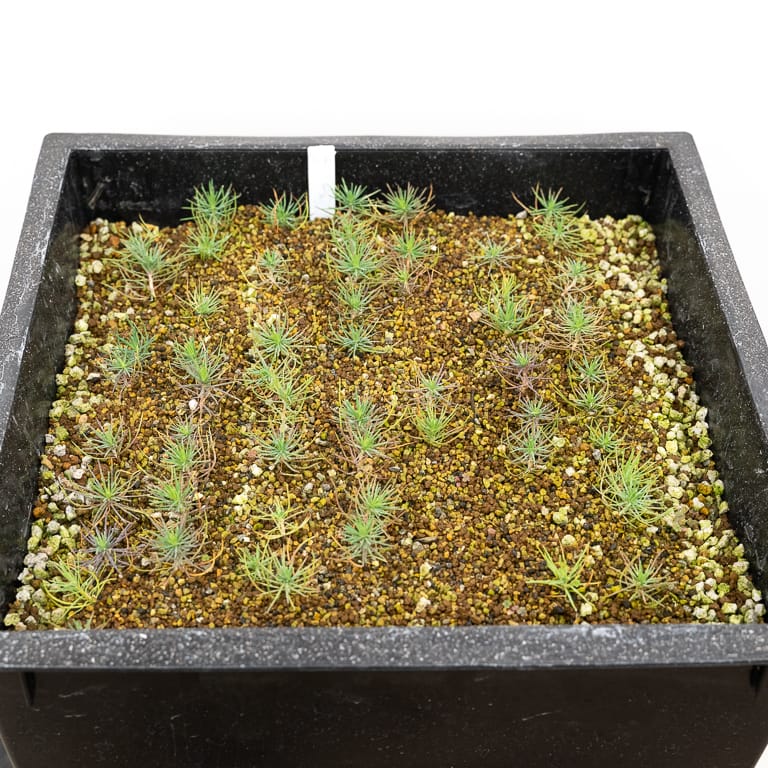
10x @ 5 min.
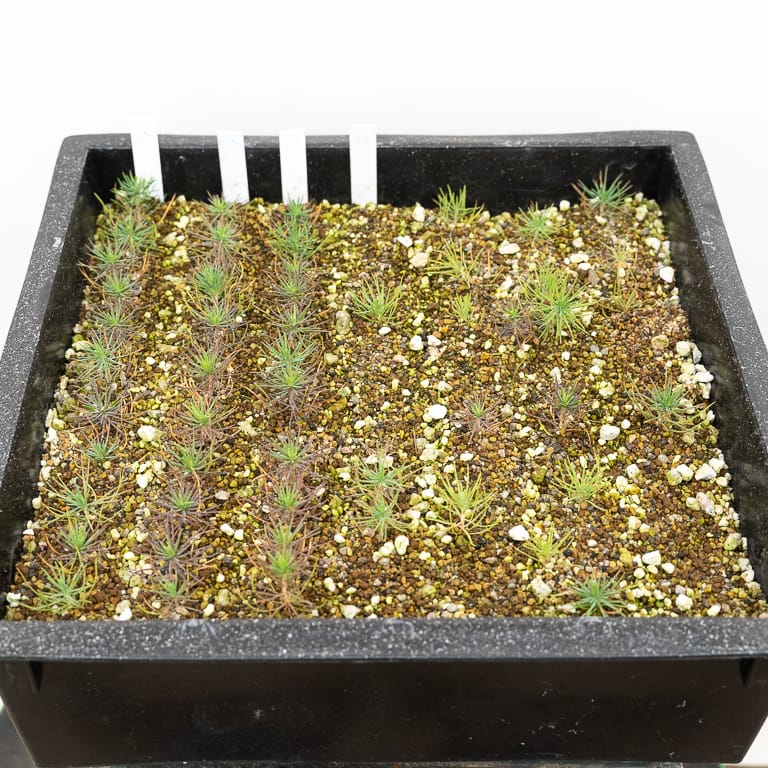
Row 1 (5x @ 1min.)
Row 2 (5x @ 2min.)
Row 3 (5x @ 5min.)
Rows 4-7 (5x @20min.)
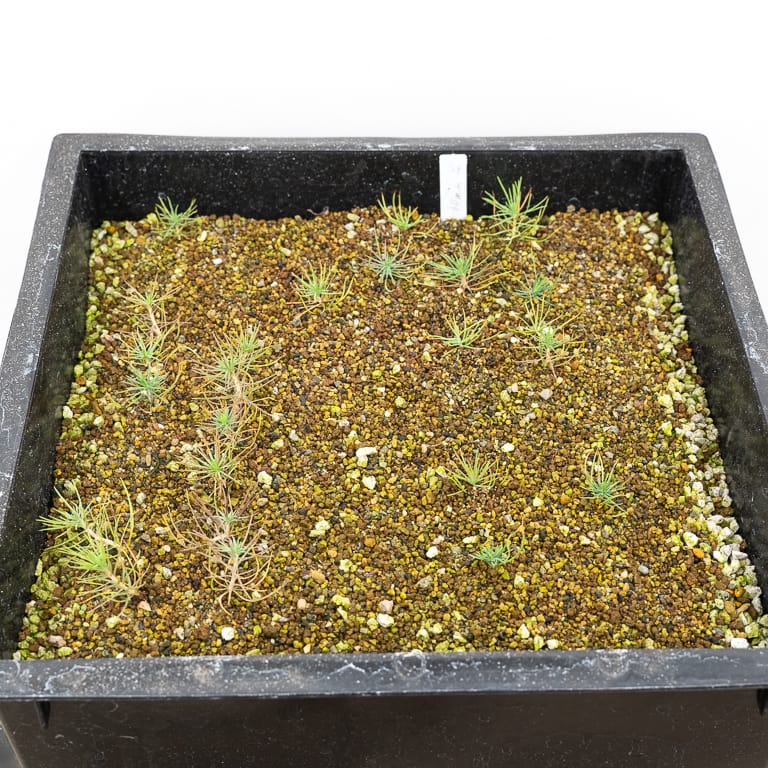
5x @ 20 min.
Here are the numbers.
Flat 1 (10x @ 5 min.): 55/77 (71%)
Flat 2 (10x @ 5 min.): 50/77 (65%)
Flat 3 (5x @ 1 min.): 11/11 (100%)
Flat 3 (5x @ 2 min.): 11/11 (100%)
Flat 3 (5x @ 5 min.): 10/11 (91%)
Flat 3 (5x @ 20 min.): 20/44 (45%)
Flat 4 (5x @ 20 min.): 24/77 (31%)
What struck me was that almost every seedling-cutting lived when the concentration was 5x and the exposure was under five minutes. Anything more than that and the numbers dropped significantly. If I try this experiment again, I’ll be looking at variations in the neighborhood of 5x @ 1-5 min.
Taking a step back from the data, I’m actually surprised any of the cuttings lived this year. When I keep seedling-cuttings outdoors and don’t move them into the sun until they show signs of growth, I find nearly 100% take.
This year I was less careful. The cuttings were exposed to full sun without water the day after they were planted. Then, after a few days in the shade, I moved them to a spot where they got morning sun. They quickly dried out again so I moved them under shade cloth for a few weeks before bringing them back into a location with morning sun.
For the highest success rate and the best roots, I’d recommend keeping the seedlings in a greenhouse with misters and bottom heat. Instead, I wanted to see what the results would be taking an approach that’s available to anyone with both sun and shade in their garden. The dryness and early sun exposure was accidental – and definitely not recommended!
I don’t know what the roots look like yet, but if I find any differences among the above groups, I’ll be sure to post the results.
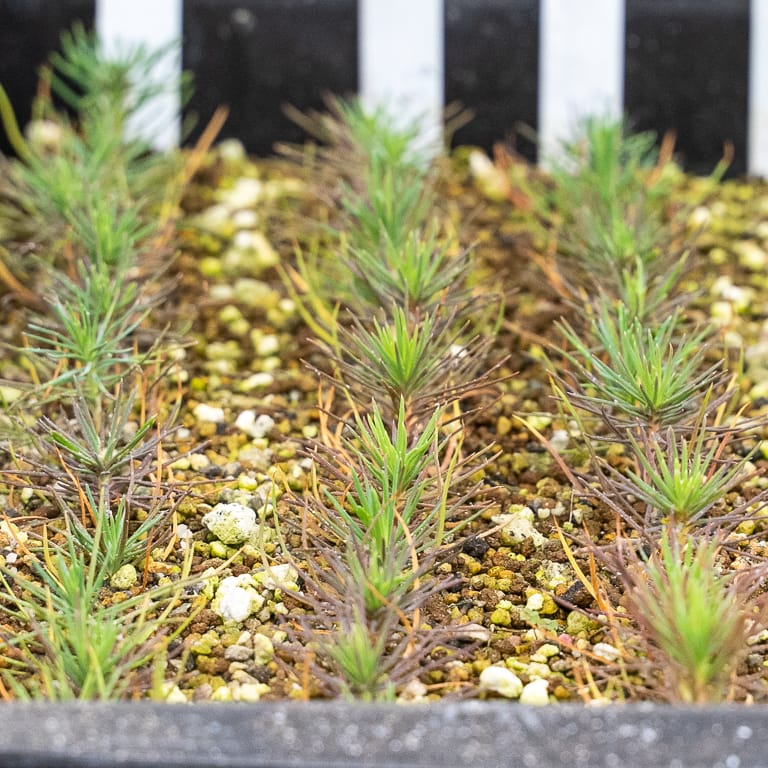
Healthy seedling-cuttings
Support Chris and Lisa Kirk of Telperion Farms
The home of Chris and Lisa Kirk and their beautiful bonsai nursery was lost to fire this week in Oregon. You can help Chris and Lisa, as well as Telperion’s caretaker Roxie Eslick, by contributing to their Go Fund Me pages.
Lisa & Chris Kirk Wildfire Recovery Fund
Help Roxie recover from Telperion fire
Subscribe to Bonsai Tonight
New Posts Delivered Every Tuesday and Friday
scott chadd says
i am always amazed at the “tenacity” of life. things that are alive have a great and abiding desire to continue living. this is good new for those of us who work with small trees.
Jonas Dupuich says
Thanks, Scott. As someone once said to me, the trees “want to live.” It’s fun to keep that in mind as it can help us get out of the way sometimes!
Mark says
Thanks so much Jonas. Fascinating information. Please do keep us informed with updates.
Jonas Dupuich says
Will do – thanks, Mark!
Zack Clayton, CBS Editor says
This is part of what I like about Bonsai Tonight. You had a system that worked for you, and you altered it to match what most of us can do. You kept track of what happened and shared it with the rest of us. That is why Bonsai Tonight is featured as a link in our newsletter so often.
Thank you for what you do.
Jonas Dupuich says
Thanks so much Zack – I really appreciate it!
Paul Woods says
Just looking at it from the other way round , the best results were a weaker solution and minimum time in it , so if you progress further to the left and have no hormone solution at all what results would you get? As a rule if thumb It may be that no solution is better than more.
Jonas Dupuich says
Great point Paul. The first time I had the exact opposite result when I tried mostly weaker solutions. This time I tried to find the upper end of what’s effective. It looks like I’m homing in what’s best.
Here’s the result from the first pass.
Steve Perea says
Jonas, I have been using Hormodin #3 and putting the cuttings in the sand then waiting 20 mins before flush and a lot die, I am trying now to dip then put them in the sand and in under 5 mins I flush them with water to 1 dilute/remove the Hormodin and 2 this removes any air pockets around the cutting as the sand liquefies. I am hoping this method will get closer to the 90% your experiment showed.
Jonas Dupuich says
Thanks for the note Steve – will be curious to hear how this approach works!
Lani says
Jonas,
This experiment helps take the guesswork out of what works and what doesn’t, so thank you for showing us. I’ve only followed the directions on the dip n grow box X10 for 6 seconds, and have gotten poorer results and wondered why. I would have never thought to give a one minute soak @X5 but next cutting season I’m trying it!
Jonas Dupuich says
Thanks, Lani – keep track of the results (or maybe try two different approaches) and we’ll see how it goes!